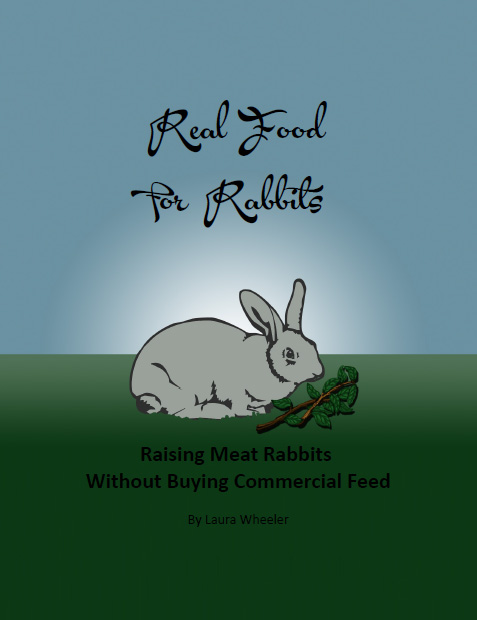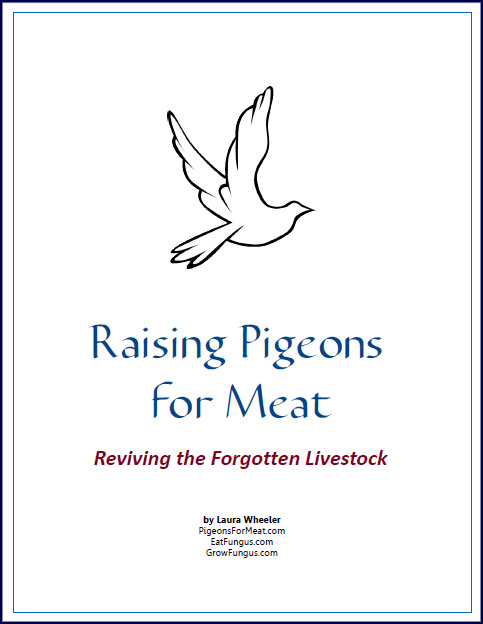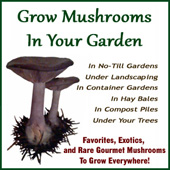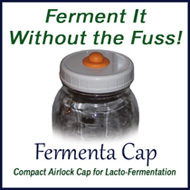Pigs
Glouchestershire Old Spots
A piggie fit for a Royal palette, Glouchestershire Old Spots (commonly shortened to simply "Old Spots" so people don't have to keep typing "Glouchestershire" or because they don't know how to pronounce it, I'm sure) is the pork preferred by the British Royal family.
A pig that produces great bacon, and great lard, this hog is easily fattened on agricultural excess, and happily consumes windfall apples, garden scraps, dairy whey and sour milk, butchering scraps, kitchen scraps, canning waste, and any other food source that you'd normally throw in the compost pile. Pigs convert it all to pork instead of compost, and this pig is an expert at that. It is considered to be a "thrifty" pig, because it grows very well on those foods. It is not exactly thrifty - it still eats a lot, and needs a lot of feed to fatten well, but it just does it on excess that was common at one time in history. The disappearance of that kind of excess is one reason why this pig lost popularity.
They are considered to be calm, smart, and prolific. The sows are good mothers and can raise very large litters, and she does so very well on pasture, but not so well in confinement. This pig breed needs room to be a pig.
- Type - dual - lean meat, but has the ability to put on a lot of surface fat if fed well
- Size - large
- Production Capacity - prolific production of weaner pigs which fatten nicely
- Special Features - gaining popularity with specialty chefs
- Best for Farms- great for farms which have the ability to afford pricey breeding stock for an exceptionally productive and self-sufficient pig.
- Eggs, Milk, Meat Features - lean flavorful meat
- Other Products - not applicable
- Historic or Contemporary Significance - favorite pork of the British Royal Family, and a valuable homestead pig
- Housing and Space Requirement - do not do well in confinement, they need to be able to run on pasture or in woods
- Regional Adaptations - adaptable to a range of conditions
- Feed Requirement - large hog, needs lots of food, and does best with forage
- Other Considerations - This is a rare pig, which is becoming more common very slowly, but is still fairly costly to acquire breeding stock. Make sure you see the parent stock for any young pigs you buy to raise for breeding.
A NOTE ABOUT PIGS:
Pigs are omnivores. They eat anything people do, and quite a few things people don't eat. They do best on a diet of leftovers. All the stuff that a farm or homestead produces, that isn't usable by other animals or at the table. All the stuff that normally goes in the garbage can or compost heap because you don't have anything better to do with it.
Pigs thrive on:
- Garden scraps - tops, roots, bug eaten lettuce, overblown squash or cukes, the comfrey or Jerusalem Artichokes that have taken over, the vines at the end of the season, the weeds (give them time to grow large enough to be worth tossing to the pigs), the potatoes with wireworms or the half-eaten sweet potatoes, or any infested plants WITH the bugs.
- Orchard windfalls and vineyard excess - they'll eat anything that hits the ground, wormy apples, split prunes, bird pecked cherries, soggy strawberries, excess blackberry vines, the cuttings from grape vines and fig trees, and just about anything else that comes from the orchard (rabbits love these things too). A single 5 gallon bucket of windfall apples from a small orchard every other day, fed to nine pigs, over the course of about 2 months, made a difference of about 25 lbs per pig compared to the year before with the same feeding schedule minus the apples.
- Kitchen scraps - anything leftover or trimmed off. Freezer burned food, including meats, old food storage that needs tossed, cereal or grain products that have been infested with weevils, etc. And of course, that dish you made that just didn't turn out tasting like anything that the family wanted to finish, but which you put in the fridge anyway because you did not want to waste it...
- Butchering Scraps - yeah, pigs eat meat, and no, it does not make them more violent to do so. It only affects them negatively if you let them kill the animals themselves (they will if they get the chance), so go ahead and give them any butcher scraps, feathers, fur, and all.
- Dairy excess - whey, skim milk, sour milk, and anything that is on the edge where it is not fresh enough that you feel comfortable using it, but which is not outright moldy or spoiled.
- A number of other food sources, including rodents, snakes, and various forms of vermin, if they are on pasture, or given space to roam where those things are a problem, and pigs are the traditional stump extractor, they'll go after the tender roots and the bugs that live under the stump, and uproot the thing in the process (of course, they can do this with trees too, so some discretion is required on your part in deciding where to pen them). We do not recommend industrial waste. But whatever food sources you have a surplus of on the farm, and whatever needs consumed, the pig will happily convert.
Pigs generally forage well, and are prime opportunists, so they'll tend to spot and take advantage of any available food source. Those breeds that are less self-sufficient at hunting their own food will quickly sharpen up when given the opportunity to forage. Pigs can go feral very quickly if they are let run without care.
Pigs may be bred to produce lean meat with very little body fat, or they may be bred to produce more fatty meat and a lot of lard fat. Some pigs cross over - generally if you keep them lean they'll have little body fat for lard, but if you feed them up, they'll pad up nicely and give you a nice rendering of lard to get you through the year.
Lard has been very devalued by many people, but is especially helpful for homesteads since it is one form of healthy fat that you can produce for yourself. Given the choice, I'll go for the lard hog over the bacon hog, or a crossover if I cannot get a good lard hog. Lard is useful for cooking, and for making soaps and cosmetics. What is not of use in commercial pork production is of high value for the homestead or small farm, so depending on your needs, the breed of pig and their purpose may be very important.
Lard is the reason pig breeding has changed over the last 100 years, and the reason many older breeds are endangered. Historically pigs were valued for lard production as well as meat production. In more recent history, the trend has moved to leaner and leaner pork, and lard has been bred out of many breeds.
Most people who buy a weaner pig or two in the spring, to fatten for fall butchering, do not pay attention to the breed. They just find someone who is selling pigs, assume all pigs are the same, and drop their cash on the least expensive squealers. They'd be happier with the meat if they know the breed, and know the type of pig they are getting. This is especially important for people who WANT a lard hog, or who prefer a more tender and juicy meat.
 Click to Download Your Free Heritage Pickling and Culturing e-Book Now!
Click to Download Your Free Heritage Pickling and Culturing e-Book Now!
Instant Download, NO Registration Required!






